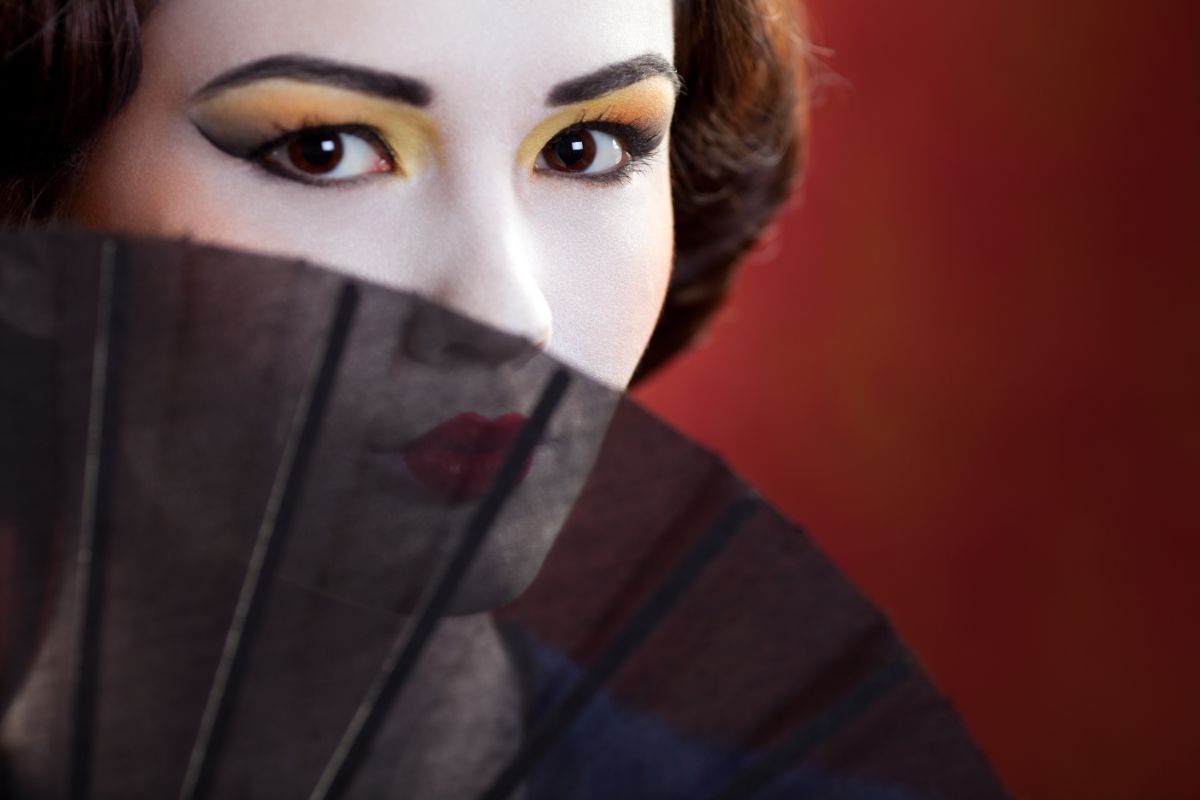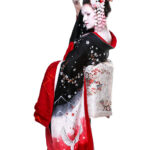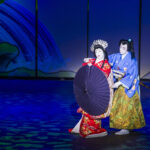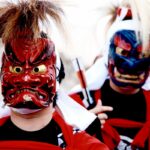Geishas are a popular symbol of Japanese culture. This term is used to describe Japanese female performers. Geisha are renowned for their unique singing and dancing performances.
Though geisha are traditionally female, there can also be male geisha. These male geisha are called taikomochi. This guide will tell you everything you need to know about male geishas!

What Is A Geisha?
Before finding out more about taikomochi, it’s important to understand what a geisha is. This is because there are many misconceptions about the duties of a geisha.
For instance, many people wrongly assume that geishas are concubines.
A geisha is simply a female entertainer who is hired to perform at banquets and other social gatherings. This entertainment includes singing and dancing.
Geishas have become prominent in Japanese iconography. This is thanks in part to their stylized aesthetic.
What Are Male Geisha Called?
As mentioned above, male Geisha are called taikomochi. However, they can also be called hōkan, which translates to “jester.”
Like geishas, taikomochi were entertainers. They were hosts who were used to charm and entertain guests.
This entertainment often involved comedy, though it could also take other forms. Hence, “jester” is an accurate approximation.
Interestingly, the very first geisha were male, even though this is now considered a female-dominated role. So let’s dive into the history of taikomochi!
What Is The History Of Male Geisha?
The history of the taikomochi dates back to the 13th century. The original geisha were men. This is shocking to many people because modern geishas are heavily associated with femininity.
During this period, taikomochi were jesters who would entertain feudal lords. These lords were known as daimyo. The daimyo were powerful, as they had significant land holdings.
These wealthy lords wanted entertainment, hence the need for the taikomochi.
Not only did the taikomochi see to the needs of these lords but they also advised them. As a result, they would also be dubbed doboshu, which translates to “comrades”.
This gave taikomochi an influential role, as they could guide the daimyo.
As time progressed, the role of the taikomochi became increasingly comical. This entertainment could also focus on storytelling.
Essentially, they were a Japanese form of court jester, who were popular entertainers during the Middle Ages.
Female geishas did not emerge until the 17th century. So for a long time, this industry was just populated by taikomochi.
By this time, taikomochi were no longer advisors to the daimyo. Instead, they were just entertainers.
The female geisha rapidly became more popular than the taikomochi. By the 18th century, there were more geisha than taikomochi.
It’s unknown why female entertainers were preferred. Perhaps these feudal lords merely enjoyed the company of these female entertainers.
By 1800, there were approximately 40 taikomochi left. In comparison, there were over 100 female geisha. As a result, these male entertainers took a more secondary role whereby they would support geishas.
By the early 20th century, the taikomochi became practically nonexistent. This was not only because female geisha were more popular, but this decline may also have been caused by western influences.
The Second World War was perhaps the final straw for taikomochi.
Do Taikomochi Still Exist Today?
Yes, taikomochi do still technically exist. However, their numbers have been dwindling since the end of the First World War.
Because of their rarity, it will be difficult to find a taikomochi. Your best bet is to look in Kyoto if you wish to hire the services of a male geisha.
They are much less popular than female geisha, who continue to have a presence in Japan.
Yet, even modern geisha have experienced a decline in numbers. There are still quite a few geisha in Kanazawa, Tokyo, and Kyoto.
The reason for this decline is not entirely clear. Perhaps Japanese girls are simply less interested in becoming geisha. It’s a profession that requires lots of dedication.
Moreover, there simply may not be a need for geisha, regardless of gender. After all, large banquets are much less common than they were in the past. Customers might also be unwilling to pay for these services.
The Legacy Of The Male Geisha
Though taikomochi are uncommon nowadays, they continue to live on through their legacy. For instance, without taikomochi, geishas would not exist.
Moreover, one can see the influence of taikomochi on host club culture. Essentially, host clubs are institutions whereby male hosts attend female guests.
Meanwhile, female members of staff will attend male guests in hostess clubs.
These nightclubs are quite popular forms of entertainment in Japan. They bear similarities to taikomochi, as these male staff members are hired to entertain and look after guests.
Consequently, one can consider these host clubs to be the modern form of the taikomochi.
What Is Taikomochi Arai?
There is another form of male geisha, known as the “Taikomochi Arai”.
This is another way in which the legacy of the male geisha continues. These male performers participate in ozashiki, which is a popular form of geisha gathering.
During ozashiki, the taikomochi arai work alongside maiko, who are apprentice geisha.
In these gatherings, taikomochi arai entertain guests through arts. Moreover, they may tell lewd and entertaining stories in a cultured manner.
What Is The Difference Between A Tikomochi And A Hōkan?
Tikomochi and hōkan are essentially the same. They’re just different names for the same job. They are both Japanese entertainers and male alternatives to geisha.
“Hōkan” is considered the formal title for this profession. “Tikomochi” is more informal. As a result, they are interchangeable. Both of these terms emerged in the 17th century.
As mentioned, hōkan means “jester” while tikomochi translates to “drum bearer”. The word “taiko” refers to different types of percussion instruments in Japan.
The reason why the male geisha earned this name was that they often used drums in their routine. However, this was not an essential part of their performance, as tikomochi used numerous forms of entertainment.
Frequently Asked Questions
Can A Geisha Have A Husband?
Traditionally, a geisha is not allowed to take a husband. In fact, they are not expected to have boyfriends or girlfriends either.
This is because they are encouraged to be married to the art of the profession. These romantic relationships could distract a geisha from their art.
Often, a geisha will have to leave their job if they wish to get married. As a result, it takes serious dedication to become a successful geisha.
What Is The Difference Between A Geisha And Maiko?
Geisha and maiko are quite similar in that they are both entertainers.
The main difference between them is that maiko is a form of apprentice geisha. Consequently, maiko are still learning to perfect the duties of a geisha.
This means that they are typically younger than fully-trained geisha.
There are also visual differences between them. For instance, geisha tend to wear kimonos with more subtle colors, while maiko can wear more eye-catching kimonos.
Final Thoughts
So there you have it! Though male geishas, also known as taikomochi, may not be as popular as the female version, they nonetheless play an interesting role in Japanese history.
Hopefully, this guide will have answered any questions you may have about the male geisha.
- How Much Money Can You Make Teaching English in Japan? - December 12, 2022
- The Best Places to Teach English in Japan - December 9, 2022
- The Best Credentials for Teaching English in Japan - December 8, 2022








